Medical DITI is a noninvasive diagnostic technique that allows the examiner to visualize and quantify changes in skin surface temperature. An infrared scanning device is used to convert infrared radiation emitted from the skin surface into electrical impulses that are visualized in color on a monitor. This visual image graphically maps the body temperature and is referred to as a thermogram. The spectrum of colors indicate an increase or decrease in the amount of infrared radiation being emitted from the body surface. Since there is a high degree of thermal symmetry in the normal body, subtle abnormal temperature asymmetry’s can be easily identified.
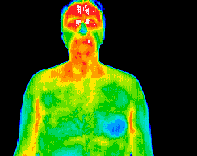
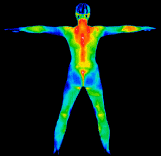
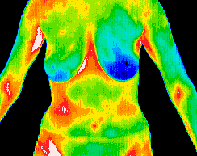
Medical DITI’s major clinical value is in its high sensitivity to pathology in the vascular, muscular, neural and skeletal systems and as such can contribute to the identification of a developing disease and diagnosis made by the clinician.
Medical DITI has been used extensively in human medicine in the U.S.A., Europe and Asia for the past 20 years. Clinical uses for DITI include:
~ To define the extent of a lesion of which a diagnosis has previously been made;
~ To localize an abnormal area not previously identified, so further diagnostic tests can be performed;
~ To detect early lesions before they are clinically evident;
~ To monitor the healing process before the patient is returned to work or training.
Medical DITI is filling the gap in clinical diagnosis. X ray, C.T. Ultrasound and M.R.I. etc., are tests of anatomy. E.M.G. is a test of motor physiology.
DITI is unique in its capability to show physiological change and metabolic processes. It has also proven to be a very useful complementary procedure to other diagnostic modalities.
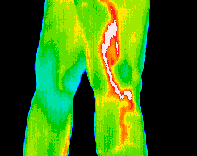
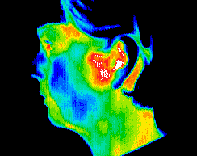
Unlike most diagnostic modalities DITI is non invasive. It is a very sensitive and reliable means of graphically mapping and displaying skin surface temperature. With DITI you can diagnosis, evaluate, monitor and document a large number of injuries and conditions, including soft tissue injuries and sensory/autonomic nerve fiber dysfunction.
1. Medical DITI can offer considerable financial savings by avoiding the need for more expensive investigations.
2. Medical DITI can graphically display the very subjective feeling of pain by objectively displaying the changes in skin surface temperature that accompany pain states.
3. Medical DITI can show a combined effect of the autonomic nervous system and the vascular system, down to capillary dysfunctions. The effects of these changes show as asymmetry’s in temperature distribution on the surface of the body.
4. Medical DITI is a monitor of thermal abnormalities present in a number of diseases and physical injuries. It is used as an aid for diagnosis and prognosis, as well as therapy follow up and rehabilitation monitoring, within clinical fields that include Rheumatology, neurology, physiotherapy, sports medicine, oncology, pediatrics, orthopedics and many others.
Results obtained with medical DITI systems are totally objective and show excellent correlation with other diagnostic tests.
